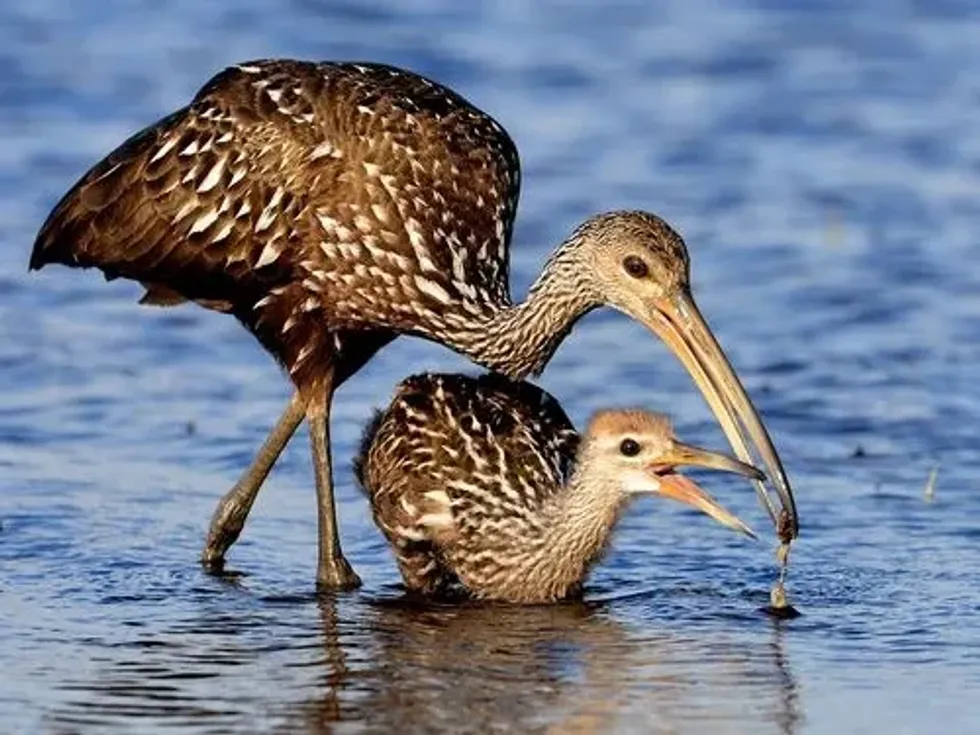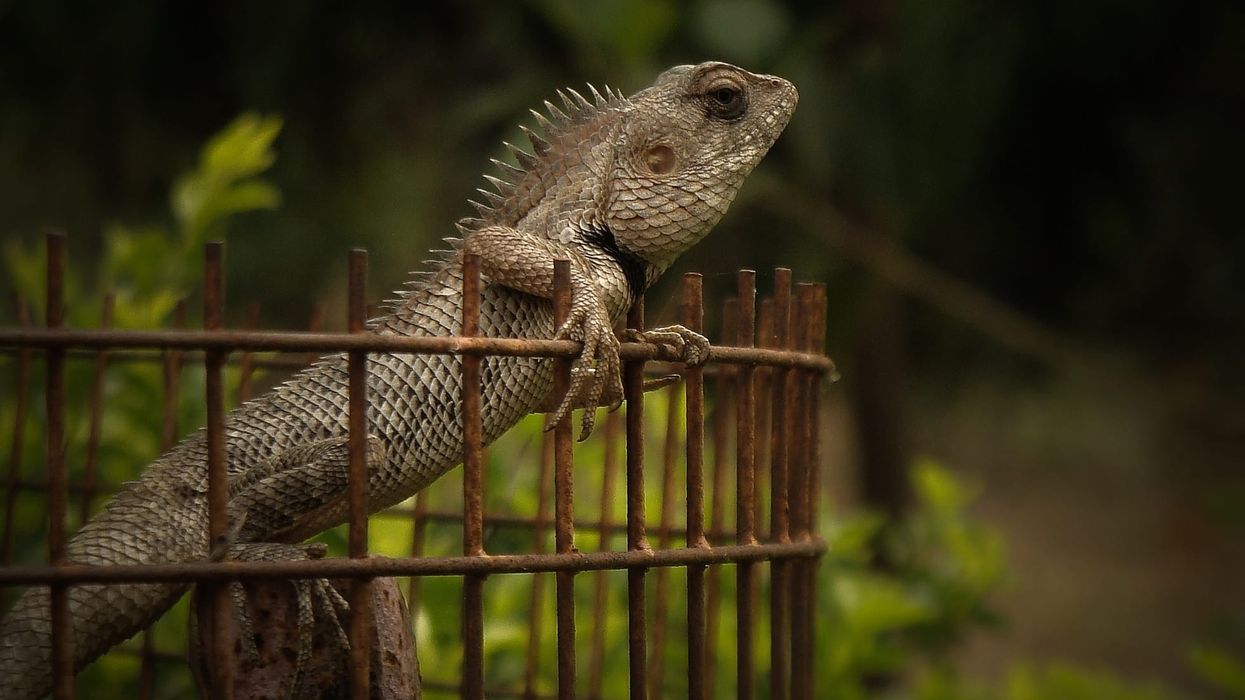The Limpkin Aramus Guarauna is set in its own monotypic family Aramidae which belongs to the crane and rail order Gruiformes. They are also known as the Birds of North America.
The Limpkin bird, also known as the Aramus Guarauna, is close to the ibis and spoonbill family 'Threskiornithidae'. These birds have a long bill curved at the tip, which helps them pull snails out of their shells. Apple snails are their main food, and they go around water bodies hunting for them.
They are known for their shrill cries in the night, which can leave you with a chill down the spine. This gives them their famous nickname, the 'crying birds'.
If you find this article interesting, do check out our articles on tawny owl or secretary bird.
Limpkin Interesting Facts
What type of animal is a Limpkin?
The Limpkin is also called Carrao, Courlan, and the 'crying bird'. It is a huge bird known for swimming. It is also identified as close to rails and cranes, and the only surviving species from the sort Aramus and the family Aramidae from North America.
What class of animal does a Limpkin belong to?
The Limpkin belongs to the Aves class of animal.
How many Limpkins are there in the world?
An official study on the population of the Limpkins has not been conducted yet. It is, however, known that the Limpkin is in abundance and is categorized as Least Concern by the IUCN.
Where does a Limpkin live?
The Limpkin Species ranges from peninsular Florida and Southern Mexico through the Caribbean and Central America to Northern Argentina. In South America, it generally prefers living in the east of the Andes; on the west, its reach stretches out to the Equator.
What is a Limpkin's habitat?
It occupies freshwater bogs and marshes, which may contain vegetation such as tall reeds and mangroves. In the Caribbean, it is also observed to occupy dry brushland.
In Mexico and northern Central America, it nests at elevations measuring up to 4,900 ft (1,500 m). In Florida, any group of apple snails is the best indicator of the presence of limpkins.
Who do Limpkins live with?
Limpkin (Aramus Guarauna) prefers living in solace but can also be found in rearing sets or little free gatherings. They are hard to see while perching discreetly in thick greenery, yet don't explicitly hide when they are active, particularly while looking for food.
How long does a Limpkin live?
A relevant study regarding their life span has not been done yet.
How do they reproduce?
Males build up their territories, and multiple males may group up to form a large area of nesting territory. They are highly territorial and will keep away all foreign birds or Limpkins who do not belong to the nesting territory.
Males build the nests on vegetation that grows on water, tall trees, or ground. Single females visit these nesting territories looking for a potential mate. Males may have to fight against other male birds for breeding rights.
A clutch consists of six eggs on average, laid every day until the entire clutch is laid. After which, the eggs are incubated by both parents throughout the day, but only the female incubates the eggs during the night.
The males sometimes scout the territory to look for danger, while the female takes over the incubation role. The incubation takes about 27 days, and the eggs hatch 24 hours apart from one another.
What is their conservation status?
The conservation status of Limpkins is Least Concern according to the IUCN Red List Of The Conservation Of Animals.
Limpkin Fun Facts
What do Limpkins look like?
The male Limpkins are marginally bigger than female Limpkins in size. However, no distinction in plumage is seen. The plumes of the head, wings, neck, and a significant part of the backside and their underbelly are white, giving the body streaks of sorts.
This also makes their head and neck have shades of brown. It has dull dark long legs and a neck.
It also has a long, yellowish bill curved at the tip. They are somewhat similar to Quails. The bill helps them pull the snails out of their shells.
How cute are they?
Although Limpkins look cute, they sound terrible. They screech a lot while displaying territorial behavior and during the night. We'll let you be the judge of their cuteness factor!
How do they communicate?
Limpkins are generally heard more than they are seen. Regularly heard at first for sunrise, nightfall, and during the evening. Limpkins normally express themselves using a loud and shaking cry or shout.
How big is a Limpkin?
The Limpkin is 40–42 in (101–107 cm) long and 25-29 in (64-73 cm) tall.
How fast can a Limpkin fly?
There have not been any particular studies on how fast a Florida Limpkin can fly.
How much does a Limpkin weigh?
The freshwater brown and white Florida limpkin weighs 2.0-2.9 lb (9-1.3 kg)
What are their male and female names of the species?
These species of birds do not have a gender-specific name.
What would you call a baby Limpkin?
The baby limpkin does not possess a specific name but can be referred to as chicks or young ones.
What do they eat?
Limpkin's favorite food is apple snails (Genus Pomacea), in addition to three other local freshwater snail species and five types of freshwater mussels. Limpkins hunt for snail and mussels by sight, strolling along the wetlands or into the shallows and holding onto the prey rapidly with their bill.
They mostly like to feed on apple snails, and this is evident as, if you ever come across an area with a lot of empty apple snail shells, you can be sure that Limpkins are around.
Are they dangerous?
Limpkins are known to be extremely territorial. And any creature that enters its territory will have to face a very angry and aggressive Limpkin, especially guarding its eggs.
Would they make a good pet?
Limpkins do not make good pets as they are too noisy and territorial and do not allow people to enter their territory.
Did you know...
Some Limpkin bird facts are known as North American birds as they are found in abundance in North America.
This species was originally found in Florida. Their nickname is Limpkin Florida birds.
They prefer to dwell in wetlands and marshes with a lot of vegetation and snails for food. Their favorite food is apple snails.
These birds use their bill to make their nest and feed their young ones snails and other insects. The conservation of these young birds is taken care of by different wildlife parks.
The Limpkin call
The males have particularly long, circled windpipes, or tracheas, like the cranes. They utilize these to make noisy, grinding, penetrating shrill shrieks and moans, typically known as Limpkin sound.
During mating, or when they spot a predator like a crocodile, Limpkin calls others with their shaking calls. They are known to scream through the night, which can be scary if you aren't familiar with it.
How to get rid of Limpkins
Limpkins are secured by Federal and State Laws. Anyone hassling these birds will be managed unequivocally by Florida Fish and Wildlife. Punishments include very hefty fines and a possible jail time. You can always get the wildlife officials to help you out if you have a Limpkin problem.
Here at Kidadl, we have carefully created lots of interesting family-friendly animal facts for everyone to discover! Learn more about some other birds, including blue-and-yellow macaw, or harpy eagle facts.
You can even occupy yourself at home by drawing one on our Limpkin coloring pages.










